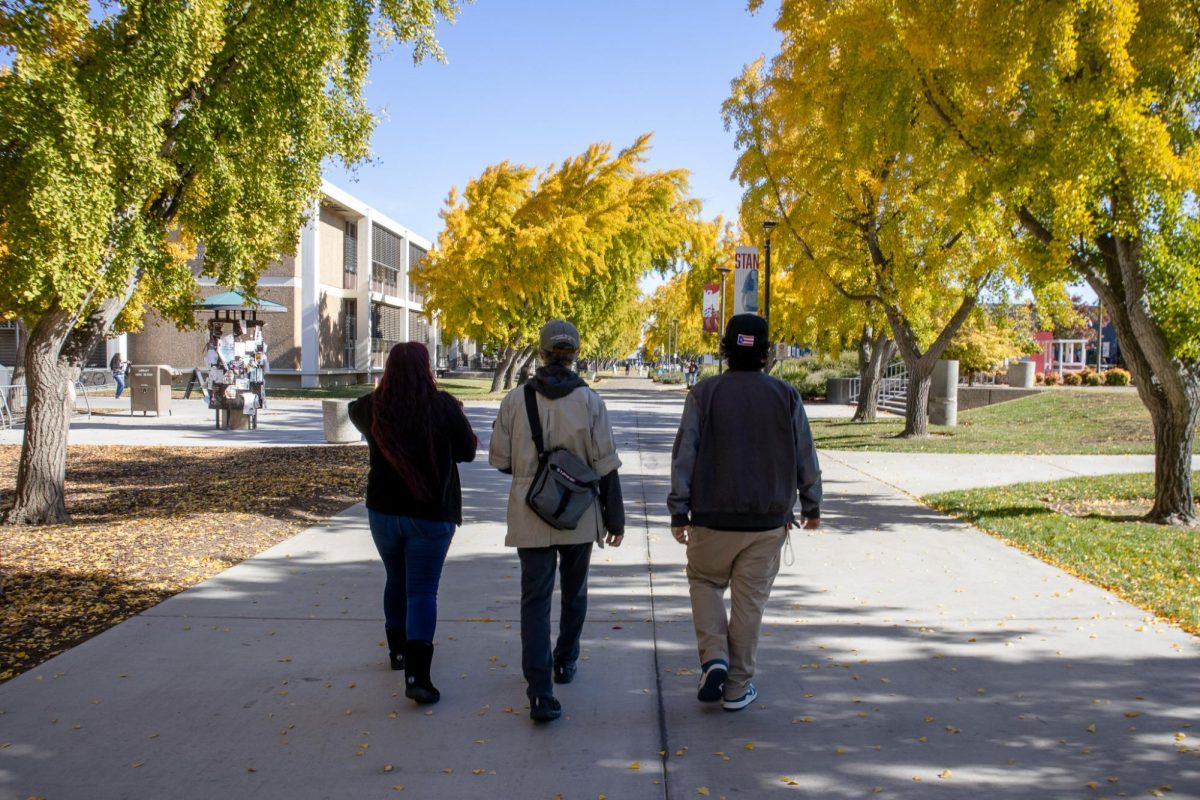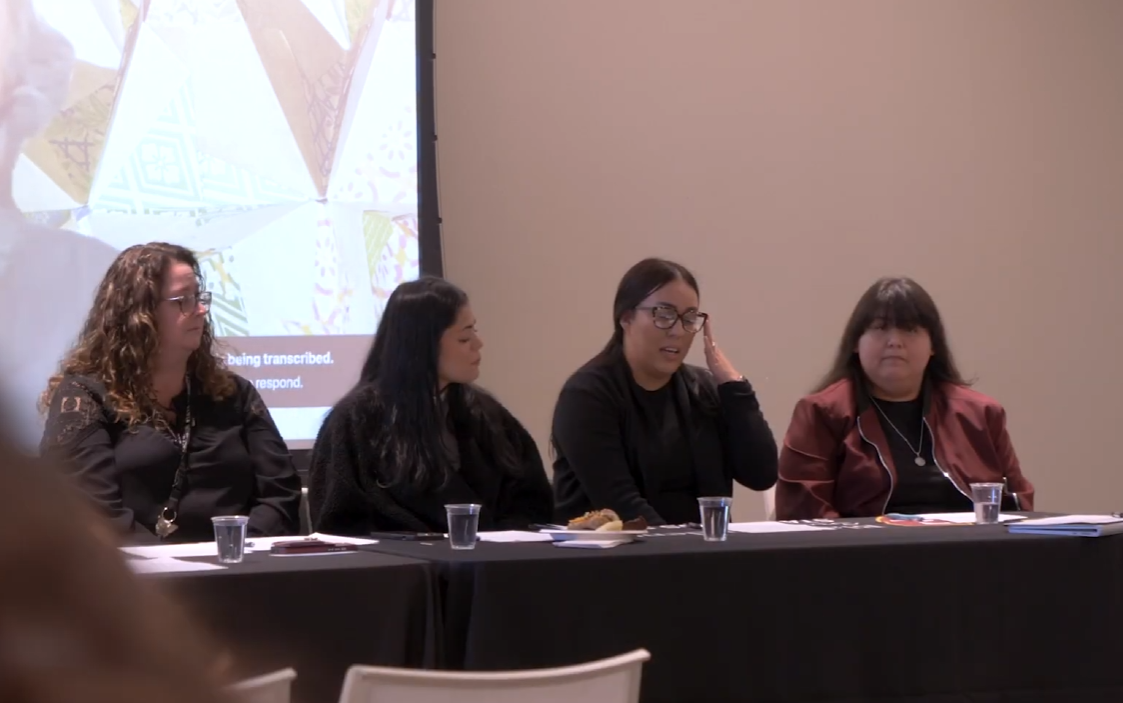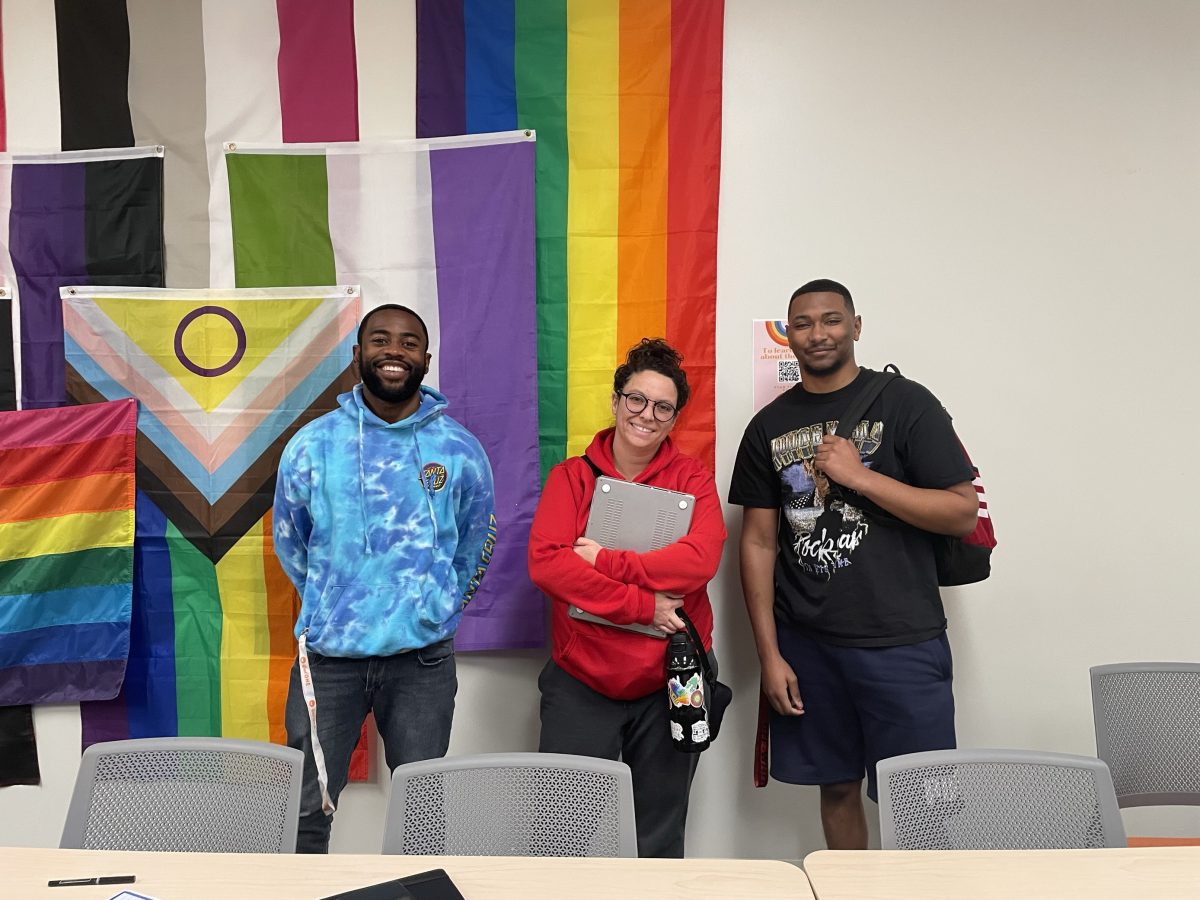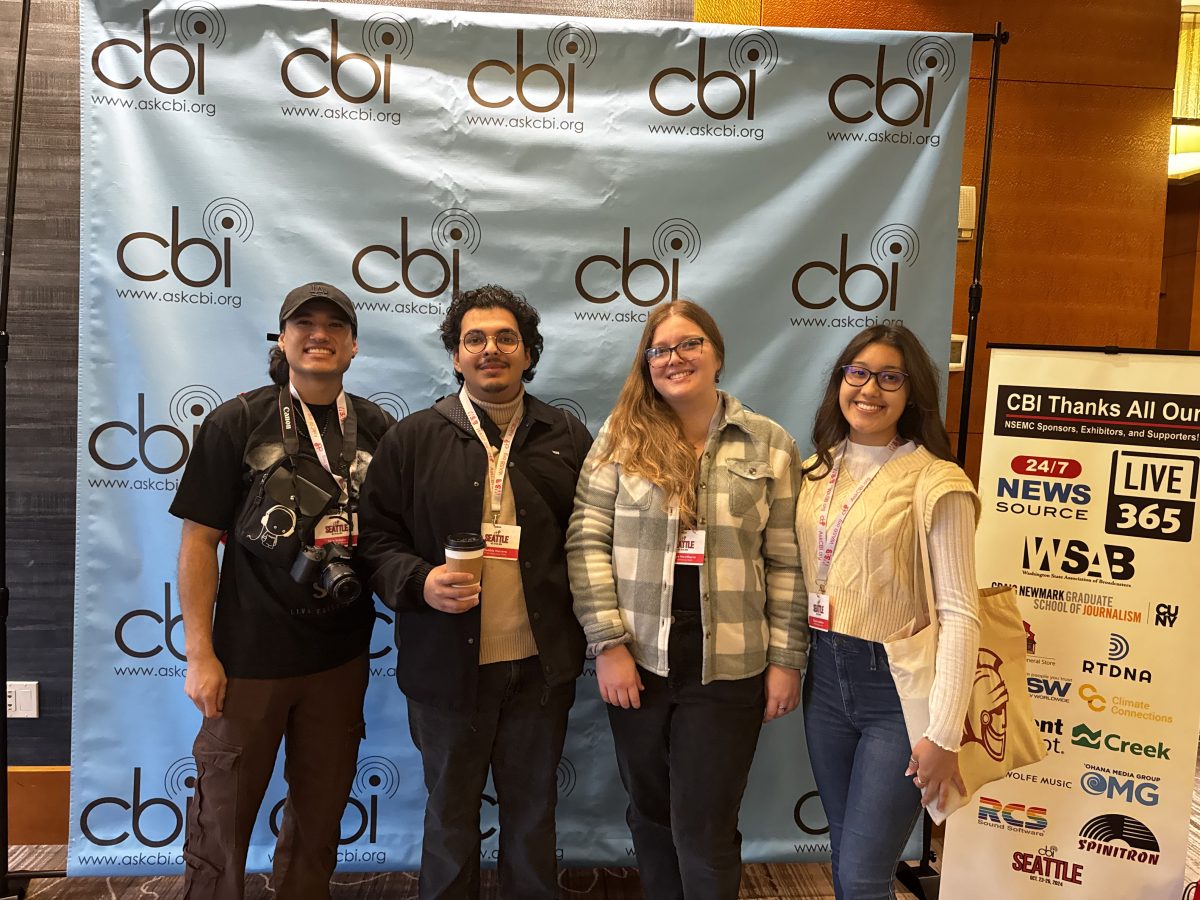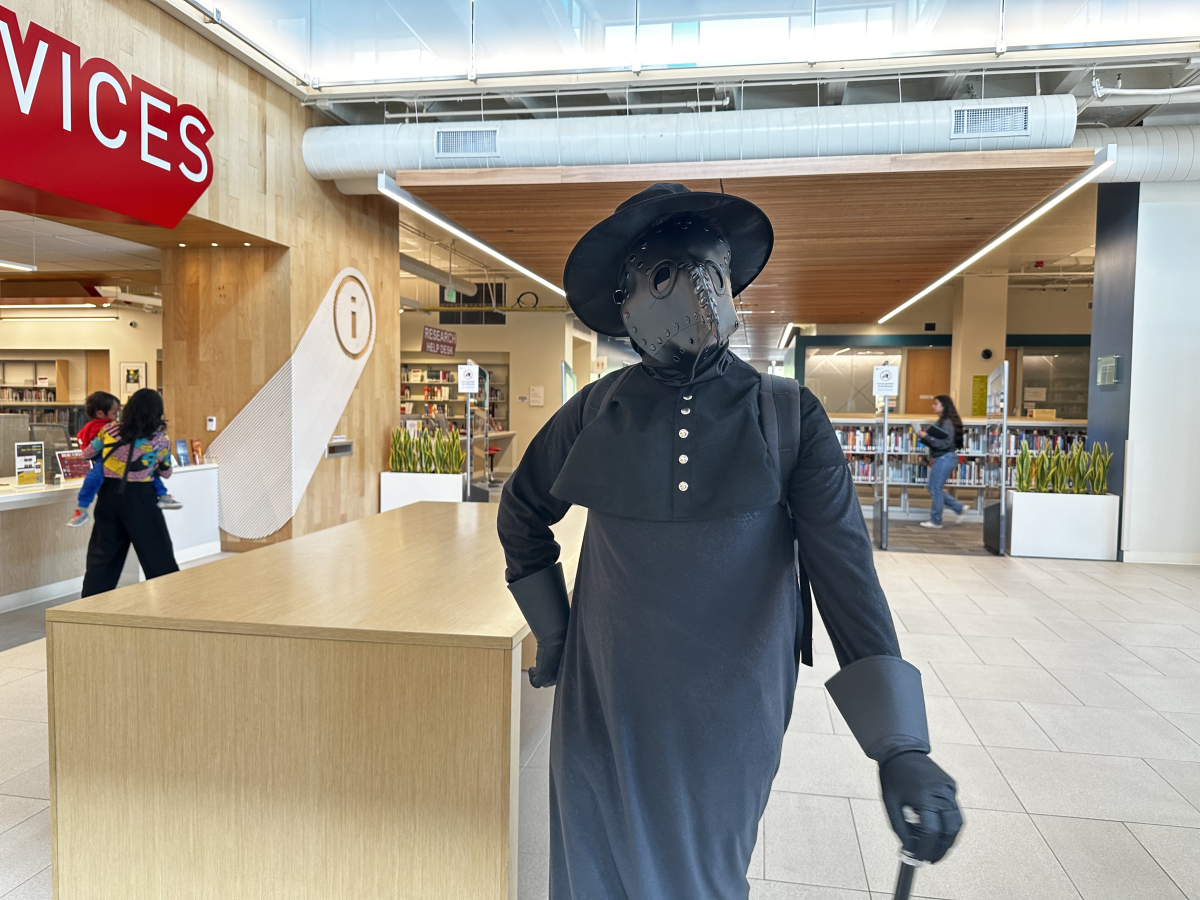California State University, Stanislaus (Stan State), has begun an investigation on Nathan Damigo (junior, Social Science), a white supremacist who made national headlines this past Saturday after he was captured on video punching a woman during a Berkeley clash.
This clash occurred during a Free Speech rally in Berkeley’s Martin Luther King Jr. Civic Center Park where supporters of President Donald Trump and anti-Trump protesters were present.
The park was divided by an orange net and on either sides of the net were anti-Trump protesters with signs that read “Anti-Fascist Anti-Racist,” while on the other side of the net Trump supporters held signs reading “Defend America,” according to The Daily Californian.
Damigo was highlighted as a white supremacist attending Stan State this past Fall when posters of his white supremacy group were seen all around campus. Those posters aimed at recruiting fellow white students in joining his white supremacy group called Identity Evropa.
Identity Evropa encourages white people to refuse other cultural identities to “defame our history and rich cultural heritage.”
Also, in this group’s website, pictures of the fascist leaders are shown in a rally held in San Francisco where Damigo, along with other of his group’s white supremacists, are seen holding posters and banners saying “No Sanction…End sanctuary to illegals—make San Francisco safe again.”
However, before Damigo even thought of becoming a white supremacist leader, he served in the Marine Corps and was deployed to Iraq for two combat tours.
He then served five years behind bars after he committed an armed robbery against Changiz Ezzatyar, a San Diego taxi driver. Damigo placed a pistol to Ezzatyar’s head and said he “looked Iraqi.”
It was then that Damigo was exposed and involved with white supremacist gangs within the jail. While serving his five years in jail, Damigo began to read books by David Duke, a former leader of the Ku Klux Klan.
From there, Damigo began the ideology that whites were superior than any other ethnic group.
This past December, ethnic studies lecturer Dr. Fela Uhuru sponsored a symposium where Damigo was able to present his political social ideas while also being challenged by students with differing viewpoints as a way to offer insight and some form of understanding.
According to Uhuru, Damigo’s comments during the symposium were in sharp contrast with the video that he saw on Sunday of his former student punching a woman in the face and knocking her to the ground–something that he showed in class to students on Wednesday.
And while he was shocked at what he saw, he also said that it was a valuable opportunity to see through the hateful rhetoric at exactly who the people are who are carrying these ideals onto campuses and into classrooms across the country.
“I’m glad that it happened because it’s really showing his true colors. When we had the symposium in November, he was demonizing and otherizing the Klan and saying that they wouldn’t let any Klansman into their organization,” Uhuru said. “But it’s like he showed his true colors on Saturday by attacking that woman, and it showed him as a hypocrite.
Dr. Uhuru also expresses the importance of becoming united and allies to each other’s ethnic backgrounds in order to fight the hate that someone like Damigo represents.
“And we must build alliances across racial and ethnic lines–that’s how we’re going to defeat people like him and people that think like him on the far right. Their heart is filled with hate,” Uhuru added.
After the incident in Berkeley, various students stressed to President Ellen Junn their emotions towards the situation, asking her to immediately do something about Damigo’s actions.
On Sunday, she published a statement saying: “The university has zero tolerance of violence and we will take all of the necessary legal and disciplinary measured to ensure that all students and everyone on campus have a safe and secure environment.”
Further, on Tuesday, Junn released another statement to the university stressing the importance of appreciating differences, diversity and inclusivity.
“[…] we at Stan State cherish and uphold our core commitment to diversity and inclusion. As a community, we expressly and directly reject acts of racism, prejudice and intolerance,” wrote Junn on her message to the university. “This strong stance for diversity and inclusion is clearly enunciated in multiple campus statements and resolutions, such as Respect for Campus Diversity of all Members of Campus Community (Sense of the Senate 10/AS/10/SEC).”
According to Janice Curtin, Interim Vice President Communications and Public Affairs, this statement is already condemning white supremacy and any violent act accompanying it.
However, Daniel Rivas (senior, Mathematics) says that even though Junn’s statement makes him feel a little bit better, he still wishes Junn was proactive toward Damigo’s actions since last Fall when he was highlighted as a white supremacist who encouraged hate speech.
“Junn’s statement makes things a little better but that is not to say this isn’t a concern for many students. This is an issue that was voiced by students months ago. We said that this is something that can happen, and did happen. It’s disheartening knowing she wasn’t proactive about the situation,” Rivas said.
Zachary Muñoz (senior, Social Science) emphasizes why it is important to promote diversity and inclusion not only on campus, but also in the surrounding communities. This is something that Junn has been stressing since she begun as Stan State’s 11th president.
“Bringing light to all of the diverse clubs on campus like [Black Student Union] and [Love Evolution] would promote inclusiveness. But there is always going to be people who don’t believe in that. It’s the job of the campus community to help promote diversity and inclusiveness. And the only way you can do that is by leading by example. Once the campus community starts doing this, that will be the way things will start to change. I already see that there are positive changes in that direction,” Muñoz expressed.
Moreover, Fernando Hernandez (junior, Criminal Justice) thinks that Damigo is putting Stan State in a situation where the school is gaining bad reputation.
“Even though he wasn’t there representing Stan, the media has figured out where he goes to school and they are using his attendance here to portray the school in bad light,” Hernandez said.
But Stan State students are not the only ones who are reacting to Damigo’s actions, but also celebrities on twitter and other Turlock natives.
On Saturday evening, when the video of Damigo punching the women went viral, actor Chris Evans retweeted the video and quoted it saying “I hope I run into Nathan.”
In addition, Jazmin Buenrostro, a California State University, Monterey Bay, student and a native to Turlock spent her Monday afternoon standing on the grass outside of the library holding a sign that read “violence and racism will not be tolerated expel Nathan Damigo.”
“We can’t pretend that this didn’t happen because it affects every single student that walks onto this campus just to try and get their education,” Buenrostro expressed. “How can a student feel safe when somebody who is prone to violence remains a student here. He already has a history of being violent, and I think at some point you must pay attention to the warning signs.”
Junn encourages students and faculty to help her achieve a harmonious atmosphere for everyone on campus, and to be respectful to one another.
“We must commit to our collective efforts educate, model and learn. We can achieve this by promoting respectful, constructive and peaceful dialogue and interactions with others, and by building a society and ethos of greater understanding and harmony for everyone,” Junn stated.
Categories:
Stan State launches investigation on white supremacist who punched a woman at a Berkeley rally
Jazmin Buenrostro, a Turlock native and student at CSUMB, stands outside of the library encouraging Damigo’s expulsion on Apr. 17, 2017. (Photo Courtesy of Jason Campbell)
0
Donate to Signal
Your donation will support the student journalists of California State University, Stanislaus. Your contribution will allow us to purchase equipment and cover our annual website hosting costs.
More to Discover



